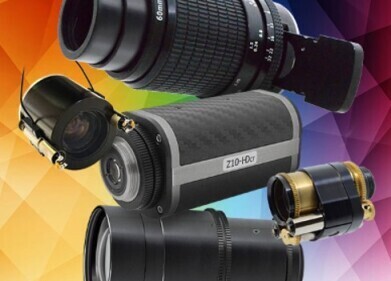Microscopy & microtechniques
Why Microscopy is Improving, Thanks to Our Arachnid Friends
Sep 08 2016
Spiders – some people hate them; some people love them. Scientists involved in microscopy will surely be the latter, after the latest discovery at Bangor University. The scientists in the north of Wales, as well as those at Oxford University, have found a new use for spiders’ silk. It’s thought the new discovery could drastically improve microscopic research.
Superlens
Spider silk, the scientists have discovered, can actually enhance the magnification of a microscope by up to three times. Because of the basic principles of light, it has only previously been possible to view structures as low as 200 nanometres. This is the smallest possible size of bacteria, so it’s still pretty tiny. However, adding the silk of a particular spider opens up the possibility of even smaller structures being examined.
“These lenses could be used for seeing and viewing previously ‘invisible’ structures, including engineered nano-structures and biological micro-structures as well as, potentially, native germs and viruses,” said Oxford University’s Professor Fritz Vollrath.
Orb weaver
It isn’t just any spider silk that they have used. Golden silk orb-weavers, known for their particularly impressive webs, are the scientists’ choice in this case. Found throughout the world, this genus of spider gets its name from the golden colour of their spun silk in the sunlight. They are also known as Nephila, or banana spiders, but how exactly is the silk applied to a microscope?
“"In much the same was as when you look through a cylindrical glass or bottle, the clearest image only runs along the narrow strip directly opposite your line of vision, or resting on the surface being viewed, the single filament provides a one-dimensional viewing image along its length,” explains Professor Vollrath.
Scientists have actually been searching for a way to increase the zoom of microscopes for decades. Superlenses have been created in recent years. But as the new publication states, “Fabrication of these superlenses is often complex and requires sophisticated engineering processes”. It’s no surprise, then, that this revelation is being dubbed as a ‘rewriting of the rules’ of microscopy.
Enhanced microscopy
It’s not just Bangor and Oxford that are looking to break the boundaries of microscopy. While they have made a breakthrough with the discovery of golden orb silk, the scientists at the University of Huddersfield are looking at other methods of magnification, enabling them to examine materials smaller than 100 nanometres. Find out more in ‘Studying Materials at the Nanoscale: University of Huddersfield Offers Unique Facilities’.
Digital Edition
Lab Asia Dec 2025
December 2025
Chromatography Articles- Cutting-edge sample preparation tools help laboratories to stay ahead of the curveMass Spectrometry & Spectroscopy Articles- Unlocking the complexity of metabolomics: Pushi...
View all digital editions
Events
Jan 21 2026 Tokyo, Japan
Jan 28 2026 Tokyo, Japan
Jan 29 2026 New Delhi, India
Feb 07 2026 Boston, MA, USA
Asia Pharma Expo/Asia Lab Expo
Feb 12 2026 Dhaka, Bangladesh

.jpg)
-(2).jpg)
















